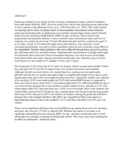| dc.description.abstract | Snacking is defined as any intake of food or energy-containing beverage outside of breakfast, lunch and dinner (Bellisle, 2007). Previous studies have shown that snacking among adolescents is most common in the afternoon (Cross et al., 1994; Howarth et al., 2007). This study focused on snacking and its effect on dietary intake of macronutrients from normal school balanced meals and nutritional status of adolescents in two public national high schools namely Nairobi School for boys and Kenya High School (KHS) for girls, in Kenya. These schools were purposefully and randomly selected. A cross-sectional study on nutritional status and level of snacking was carried out involving 172 and 180 adolescent girls and boys respectively aged 13 to 18 years. A total of 352 adolescent high school girls and boys were assessed. A semi- structured questionnaire was used to collect quantitative data on socio-economic status (SES) of the respondents’ families while qualitative data were collected through focus group discussions, key informant interviews and observations. Anthropometric measurements on height and weight for nutritional status were used. Food consumption frequency was used to assess food intake from school meals and snacks. Energy and protein intake data were collected using a 24-hour recall based on a sub-sample of 31 students (14 boys and 17 girls).
Eleven percent (11.0%) boys and 10.2% girls was stunted. Almost an equivalent number of both boys and girls (45.2% and 44.1% respectively) were found to be normal and nourished. Although, the girls are more likely to be stunted than boys stunting was not significantly different between the two groups and underweight was significantly higher in boys than in girls. Significantly more girls were overweight and obese than boys. Among the students who reported to be snacking, 10.4% were underweight and 76.9% had normal BMI-for-age as compared to those who did not snack where 20.0 % were underweight and 63.3% with normal BMI-for-age. It was observed that amongst those who snacked, an equal number of boys and girls at 5.2% were underweight while 6.9% more girls than boys (5.9%) were overweight. Most of the students who snacked had a normal (89.3%) height-for-age. Amongst those who snacked and based on gender, more boys (5.9%) than girls (4.8%) were found to be stunted. Among the gender the difference between those who snacked and those who didn’t was insignificant There were almost an equivalent percentage of those who snacked at 10.7% and those who didn’t at12.0% and were stunted.
There was no significant difference between the BMI-for-age among those who were snacking and those who were not (?2=5.84, p value=0.120). Whether one snacks or not there is no significant relationship between snacking, BMI- for-Age, and hence nutritional status of both adolescent boys and girls in national boarding high schools. This study shows that snacking has no effect on adolescents’ nutritional status. | en_US |

